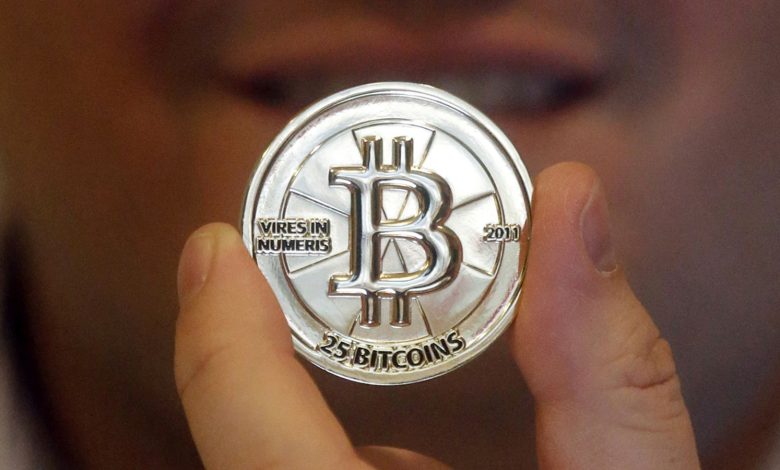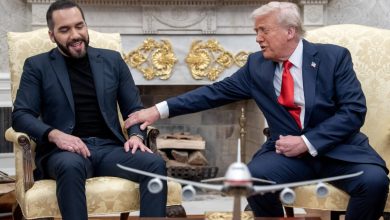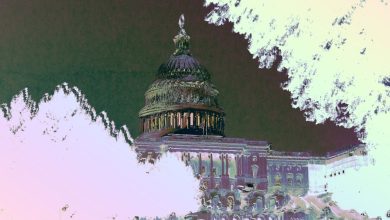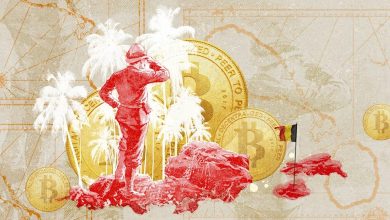Official backing for crypto creating conditions for financial crisis

In the past month Wall Street has been gripped by a new speculative binge. High value tech stocks have hit new records, with Nvidia becoming the first $4 trillion company by market capitalisation, while the so-called meme stock frenzy of 2021 has made a comeback.
Retail investors have been pouring money into the low-priced stock of low-profit and even loss-making companies such as the doughnut chain Krispy Kreme, the digital camera maker GoPro and the real estate platform Opendoor Technologies.
The companies targeted are those which have been heavily shorted. Shorting is a process in which investors borrow shares which they sell and then buy back at the lower price to honour the loans, pocketing the difference.
But if enough retail investors buy the stock, pushing the price up, the short sellers can be forced to buy the shares in order to meet their commitments and exit a losing trade.
The return of the meme stock phenomenon is an expression of the market frenzy which has sent indexes to record highs. This followed the fall in April on the back of Trump’s unveiling of his reciprocal tariff agenda.
In a note issued last week, analysts at Deutsche Bank considered whether the rise in borrowing to fund stock purchases was a sign of the “hottest euphoria” since 1999 and 2007. Both those events came before a significant collapse—the so-called tech-wreck of 2000-2001 and the global financial crisis of 2008.
On top of the present round of speculation, the passage of the Genius Act has prompted warnings that a major crisis is in the making. The Act purportedly sets up the regulation of stablecoins, providing a path for big money to enter the market for crypto coins.
Stablecoins are a crypto asset. But unlike the myriad of crypto coins that have been created, of which Bitcoin is the most prominent with its price recently passing $120,000, they are supposedly backed by an asset, either dollars or US government bonds.
Their chief function is to provide the link between the financial system and the crypto world by providing easier and anonymous access outside the regular banking system.
There is an unusual feature of the passage of the Genius Act which reveals its essential function.
Normally, the so-called libertarians who promote crypto rail against any regulation. But on this occasion, they pressed for its passage, spending hundreds of millions on lobbying campaigns directed at both sides of the Congressional aisle to secure legislative support for crypto.
They wanted government approval for crypto stablecoins, in the guise of regulation, to reassure major companies, banks, financial institutions and small investors that it is safe, thus ensuring the inflow of more money.
For crypto this is an existential question. Having no intrinsic value, the price of coins can only increase, and profits made, provided new investors and their money are pulled into the market—the same mechanism as any other Ponzi scheme.
At the same time, the related Clarity Act is being sent through Congress to ensure that regulation passes out of the hands of the Securities and Exchange Commission to the Commodity Futures Trading Commission which is regarded as more “crypto friendly.”
The new legislation opens the way for banks and major corporations to issue their own stablecoins. Herein lie the seeds of a major financial crisis.
In an article published in the New York Times in June, long-time analyst and historian of the monetary system, Barry Eichengreen, pointed out that the Genius Act gave hundreds, possibly thousands, of US companies the ability to issue their own currencies, such as a Walmartcoin or an Amazoncoin, bypassing the banking and credit system.
Along with many others, he likened the development of stablecoins to the Free Banking system which existed in the US from the 1830s until the Civil War. All banks were allowed to issue their own dollar so long as they were backed one for one with collateral.
This system, however, destroyed the “singleness” of money, meaning that a dollar is a dollar however it is obtained. In the Free Banking era, this did not apply. Some dollars would be accepted, others not, while some were traded at a discount or premium with each other.
He recalled that when the system collapsed in the state of Michigan in 1840, residents incurred a loss of $4 million, almost half the state’s income. But at that time the failure of one or several banks could be contained to some extent.
Today the entire financial system could be threatened. To ensure that every stablecoin was fully backed dollar-for-dollar, regulators would need to ensure that the issuer’s balance sheet was 100 percent accurate.
Recalling the collapse of Silicon Valley Bank two years ago, Eichengreen noted that regulators had discerned that its assets were losing value as interest rates rose. However, the regulators failed to act sufficiently until panicked customers withdrew their funds so quickly that the bank failed. It would have “provoked a contagious loss of confidence and a run on other banks, destabilising the entire financial system,” had the government not intervened.
“If regulators have this much trouble keeping an eye on insured banks, how can they be expected to exercise perfect oversight of hundreds, if not thousands of stablecoins issued not just by banks but by tech firms and crypto start-ups?”
Back in May, Eichengreen wrote, Treasury Secretary Scott Bessent told Congress he envisaged a situation “where stablecoin issuers held $2 trillion or more of Treasury securities. If panicked customers force them to sell these securities, Treasury prices could collapse, sharply increasing interest rates and destabilising other financial markets and our entire economy.”
Rana Foroohar, one of the leading columnists of the Financial Times, was even more direct. In a comment published last week, she issued a warning against the increased use of crypto. After noting the decision by JPMorgan Chase to look into lending against the crypto holdings of clients and the support it was now receiving from the political establishment, she wrote:
“I have yet to read anything that made me think it is more than a tool for speculators and criminals. But that hardly matters when the largest political donors are behind it.”
She likened the present push for crypto to the situation in 2000 when “advocates for over-the-counter derivatives descended on Washington begging to be properly ‘regulated’ so that they could gift the world with financial ‘innovation.’ What we got was a seven-fold increase in poorly regulated credit default swaps that culminated in the great financial crisis of 2008.”
It was not possible, she continued, to imagine a “worse moment to encourage financial ‘innovation’ than when market, economics and monetary policy are so uncertain.”
If over the next few months, the Fed had to raise rates more sharply because of inflation, markets would tank, crypto would fall further and faster, financial institutions holding crypto on their books could run into trouble, causing credit markets to freeze. “Suddenly, we’re facing echoes of 2008.”
What concerned her even more were the political implications of such a crisis.
“Trump [with the support of the large sections of the Democratic party it should be noted] has now set the stage for our next financial crisis by backing (and of course, trading) crypto. What happens when we get financial chaos and more voter cynicism about mainstream politics where there is less interest or ability for the government to buffer a downturn?”
This is certainly cause for concern in ruling circles and their media outlets. In the wake of the 2008 crisis, potential political upheavals were mitigated by the promotion of Obama as the candidate for “hope and change,” after the McCain campaign essentially collapsed with the failure of Lehman Brothers on September 15.
Since then, the mass of working people, in the US and the world over, have gone through vast and bitter political experiences. What Foroohar calls “cynicism” is a deep hostility to all the parties of the political establishment and a deepening anti-capitalist sentiment combined with a turn towards socialism, especially among youth.
The emergence of another financial crisis has the potential to go far beyond the scale of 2008 because of the exponential increase in speculation, parasitism and outright criminality. This has created the conditions for the development of a socialist movement of the working class, internationally, and certainly not least in the US, the centre of the world capitalist system.
Sign up for the WSWS email newsletter




















